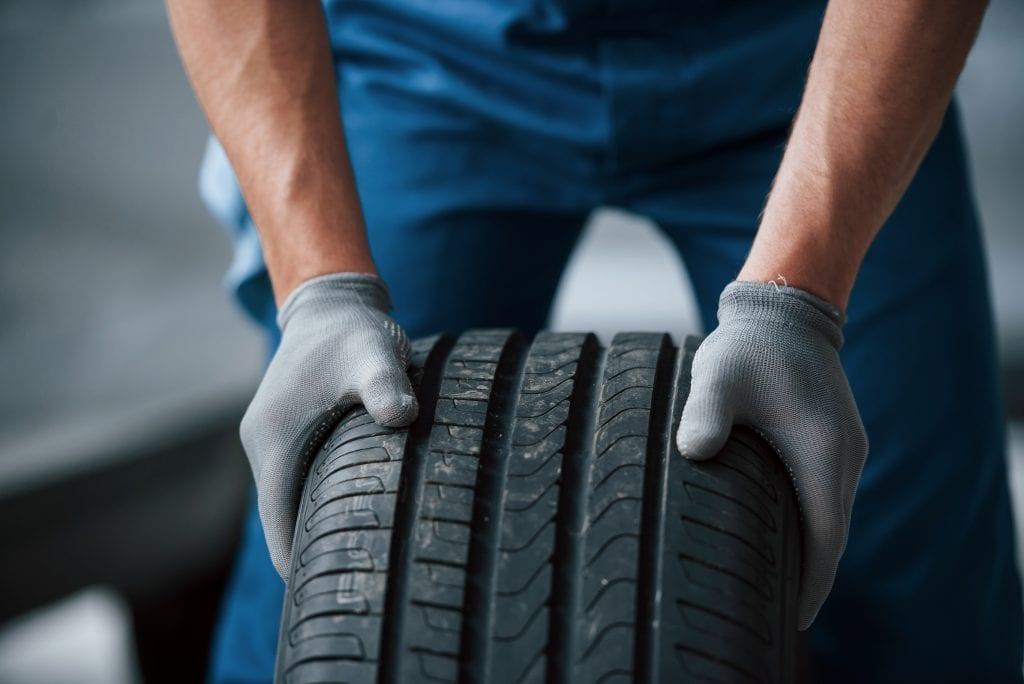5 Ways to Make Your Old Car Feel Like New Again

Contents
Introduction
Is your car feeling old, tired, and worn out? Maybe the paint has lost its luster. Or there’s a strange noise coming from somewhere. Or the radio’s kaput. Maybe all of the above. You probably loved it once, back when everything was fresh and new. But now, each time you slide behind the wheel, it’s a bit depressing.
If so, you’re probably thinking about swapping it for something newer. That seems like the logical thing to do. Newer cars are shiny and bright, and they have all of the latest features. But newer cars also come with a host of new expenses — among them, higher depreciation and costlier insurance.
There’s nothing wrong with buying a newer car if you’ve got some extra cash to spend. But if your budget is already pretty tight, buying a newer car isn’t the best idea. You’d just be trading one set of problems for another. In the end, keeping your old car is almost always the cheaper option.
So before you sign up for the additional costs of a newer car, consider a few simple ways to breathe some new life into your old one. You can give it a mini makeover for less than just the sales tax hit on the typical used car purchase (about $2000).
Here are the top five things we suggest to make your old car feel like new again.
The List

Hire a Pro to Detail Your Car
Getting your car detailed may sound like an extravagance. After all, why shell out $250 when you can just drive through a local car wash for less than twenty bucks? The main reason is that professional detailers are experts in restoring your car’s finish, inside and out, to a like-new appearance. On the other hand, the local car wash is, at best, simply going to blast off any obvious dirt. At worst, the harsh cleaning products and methods used by the average car wash can actually damage your car’s finish, especially if it’s already been neglected.
It’s important to find a detailer with a strong reputation. A good detailer can seem to work miracles, making cars with tired looking paint and badly soiled interiors look like they once again belong on the showroom floor. Good detailers not only have the tools and products to care for your car properly; they also typically have many years of experience in using them. That’s important because, in the wrong hands, detailing tools like an orbital buffer can burn through your car’s factory paint in seconds.
The best way to find a good detailer is to use online review sites like Yelp. Look for one with not only lots of great reviews but also at least a few years in the business. Experience matters. And it’s worth paying for. The best detailers typically charge at least $250 for a full exterior detail. That’s because removing years of grime, oxidation, and other imperfections takes a tremendous amount of time and effort. For a little more money, they may also be able to address other types of blemishes, such as door dings or curbed wheels. If someone promises to finish a detailing job in anything less than a full day, cross them off the list. You can be sure they’re not going to do it thoroughly.
We recommend getting your car detailed at least once a year to keep things in great shape. An added benefit of getting your car detailed is that it’s much easier to keep it clean afterwards. Once the finishes have been restored and a sealant or wax has been applied, dirt and grime simply wash right off with a mild soap and rinse.
Detailing your car won’t make it drive any better. But it will make it look better than it has in years — perhaps better than you’ve ever seen it. And it’s hard to overstate just how much of a difference that can make to its appeal. Even if you’re not sure whether to hang onto your car, we still recommend getting it detailed. Worst case, your car will look great and be far more likely to attract top dollar on the used car market. Best case, you’ll fall in love with it all over again.
Estimated cost: $250 – $500

Upgrade Your Tires
Car owners tend to cheap out when it comes to buying tires. It’s understandable. When inexpensive rubber is available for as little as $50 per wheel, it can be hard to justify spending three times that for a set of new Michelins.
But when it comes to how your car drives, there’s no single part more important than its tires. They’re literally its connection to the road, affecting everything the car does, from acceleration to cornering to making emergency stops. So if your car is rolling around on a set of cheap, worn, or mismatched tires, replacing them with a quality set of new rubber is going to make a huge difference. Depending on how bad your current tires are, it could even save your life.
To find the best tires for you and your car, we recommend using the decision guide offered by online retailer Tire Rack. It walks you through a series of questions about your car, your environment (e.g. does it snow a lot?), and your driving preferences (i.e. performance vs. comfort), and then returns a custom set of recommendations, which factor in not only their own rigorous testing but also tons of consumer reviews.
There’s no obligation to purchase the recommended tires from Tire Rack. You can simply note the results and look for them at your local tire shop. But Tire Rack is also a good option when it comes to buying. They have a large selection, as well as some of the lowest prices. The only wrinkle is that you’ll need to have a local installer to fit them to your car.
The benefits of higher quality tires include: a smoother and quieter ride, improved handling, traction, and safety, and better fuel economy. In terms of driving upgrades, there’s no better bang for the buck.
Estimated cost: $600 – $900

Add Bluetooth to Your Car
Not being able to connect your phone to your car can make it feel especially dated. Worse, it can tempt you into using your phone while driving. And that’s a big no no. A recent study by the National Highway Safety Administration (NHTSA) estimated that over 3000 people die per year due to distracted driving. That’s more than 10% of all driving fatalities.
But safety’s not the only reason to add Bluetooth to your car. It also vastly improves your everyday driving experience. With a Bluetooth connection, you can listen to your favorite music, take in the latest podcast, get driving directions, and carry on hands-free phone conversations all through your car’s stereo system.
Adding Bluetooth is not as hard or expensive as you might think. You don’t even have to swap out your existing radio. If your stereo has an AUX jack, you can plug in a Bluetooth receiver and then pair your phone to it. If not, you can use an FM transmitter instead. These devices generally cost about $25 on Amazon. It’s also handy to buy a phone holder so that you can easily see the screen from the driver’s seat (and of course a car charger). We’re partial to phone mounts made by ProClip because they are designed to fit the exact dimensions of your car, though the downside is they cost a bit more than most other options.
If you prefer a more integrated solution, you can always change out your existing car stereo — or “head unit” as the pros call it — for one that’s Bluetooth enabled. These generally start at about $100 and can run to $500 or more for the fanciest stuff. Online retailer Crutchfield is a good place to look for head units that will fit the exact year, make, and model of your car. Some options even include screens with full Apple CarPlay and Android Auto integration. If you’re reasonably handy, you can install a new head unit yourself in about an hour, or you can have a local car audio shop do it for around $125.
Adding Bluetooth means that you’ll no longer have to banish your phone to your pocket or purse while you drive. Instead, you’ll have safe access to some of its best features — like music, navigation, and calling — right from the driver’s seat.
Estimated cost: $25 – $500

Fix That Thing You’ve Been Putting Off
If there’s something wrong with your car that you’ve neglected fixing, whether it’s a weird noise or vibration or the fact that the AC has stopped working, go ahead and schedule an appointment to have it addressed. It’s certainly no fun to live in fear of a looming repair bill. But at the same time you can’t enjoy your car fully if it’s broken.
It’s important to find a trusted mechanic to do this evaluation. That means someone who is well-trained in the brand — e.g. a Toyota specialist for a Toyota Camry — and also who has a reputation for high quality work. Check out our article How to Find a Good Auto Mechanic That You Can Trust to learn how to conduct a proper search.
A good mechanic won’t gouge you by throwing expensive parts at a problem. Instead, they’ll track down the root cause and replace only the thing that’s actually broken. This means an issue that seems like it might cost a lot to repair could turn out to be a relatively cheap fix. If your broken AC is traced back to a faulty drier, for instance, it could cost as little as $150 to get that cold air flowing again.
While the car is in the shop, have the mechanic go through all of its major components to check for wear. If your car is still on its original shock absorbers, for instance, they may not be performing as well as they should. The same goes for other suspension parts and bushings, which wear out not only with miles of use but also with age. Getting those worn bits and pieces replaced can make a major difference in how the car feels to drive — and safer, too.
Keep in mind that you don’t have to fix everything the mechanic finds. Assuming there are no major safety concerns, you can just take care of the things that matter most to you and then tackle the other stuff whenever you’re ready.
Estimated cost: $150+

Start a Car Maintenance Budget
Newer cars can be tempting because they often come with a warranty. Knowing that you won’t be stuck with a big repair bill can bring great peace of mind. But the downside is depreciation, which is the #1 cost of a newer car and always adds up to more money out of your pocket than any repair bill ever could. Think about it. Just because facing a $500 repair once in a while sounds scary doesn’t mean you should go out and sign up for a $500 car payment that’s due every single month.
Instead of living in fear of repair costs, start a small monthly budget for all of your old car’s repair and maintenance needs. We recommend setting aside $100 per month solely for this purpose. We’ve based the figure on a study by Consumer Reports that showed the average repair cost for a 10-year-old BMW — the most expensive to maintain vehicle in the study — was about $1200 per year. Since $100 per month is based on a worst case scenario, it’s likely that you’ll end up with a surplus of cash in the fund over the life of your car. And when it is finally time to sell, you can use any extra money towards your next car.
To keep yourself honest, go ahead and open a new savings account for your maintenance budget. Then set up automatic deposits at regular intervals to keep it funded. Otherwise, if that extra cash is just sitting in your checking account, it might be tempting to spend it on something else. And then when you do have to visit the repair shop, you can rest easy knowing that you can just pay yourself back from this account whenever the bill comes due.
High interest savings accounts are a good option for stashing away your maintenance money because they earn as much a ten times the interest of a regular account. That still not much — typically around o.4% these days — but it’s better than nothing.
Estimated cost: $100 per month
The Bottom Line
Sure, newer cars are tempting. But not only do they cost more money, they don’t always solve the problems you have with your old car. And sometimes they come with new ones that you weren’t even expecting.
So, before you give up on your old car, try one or more of these options. You might be surprised at just how big a difference they can make.